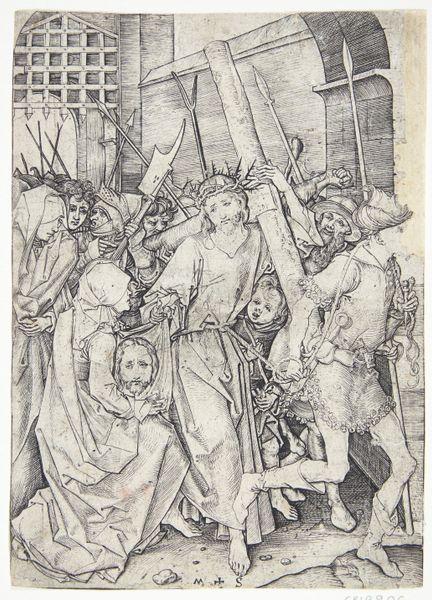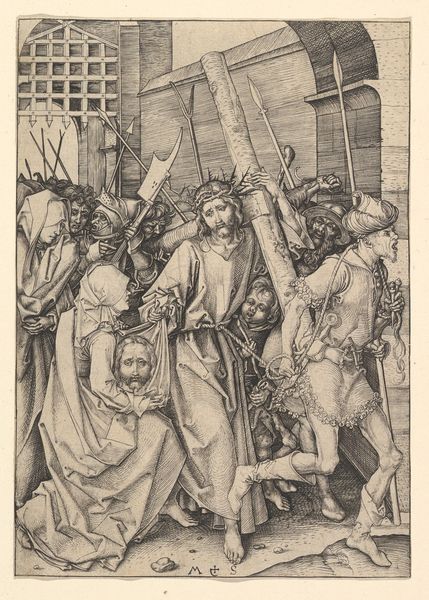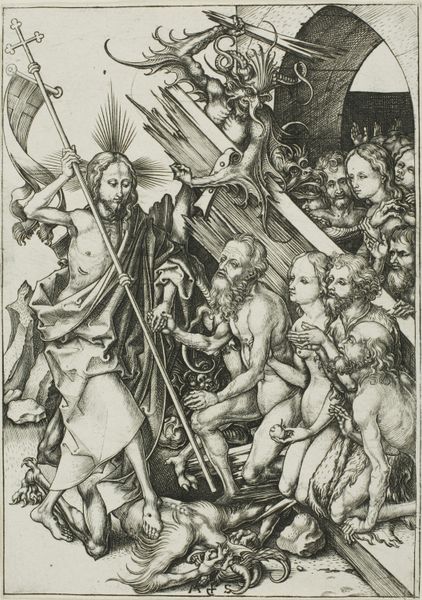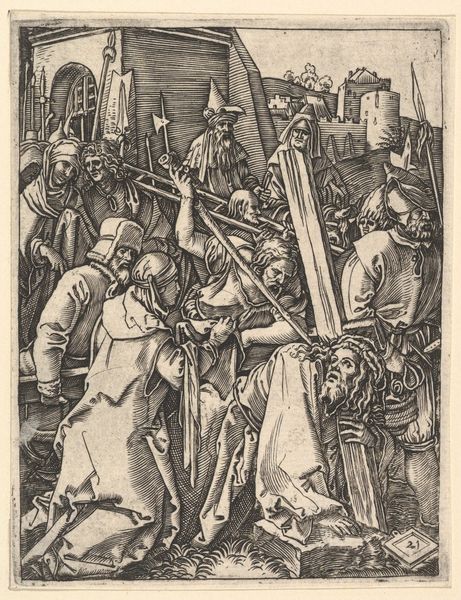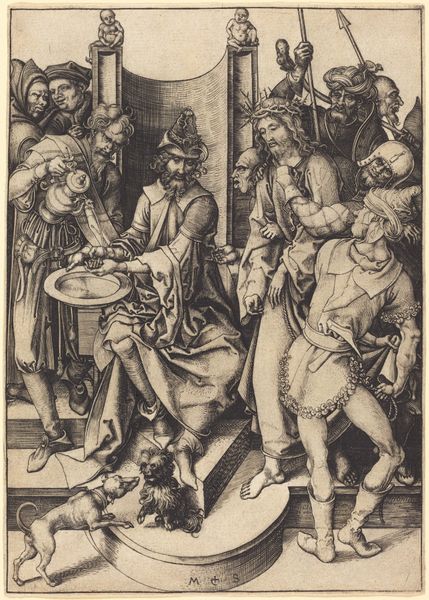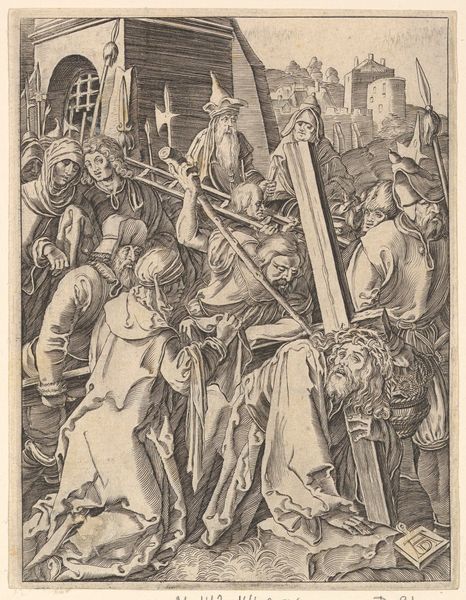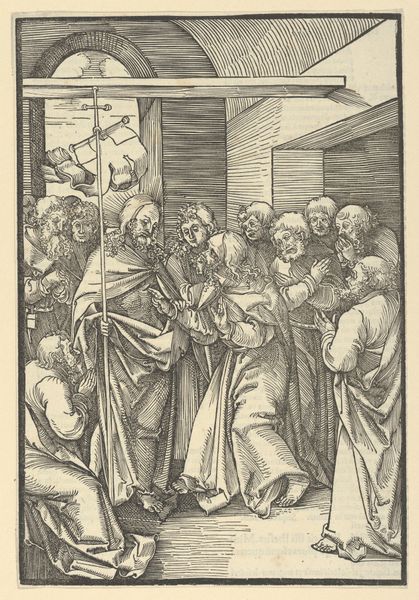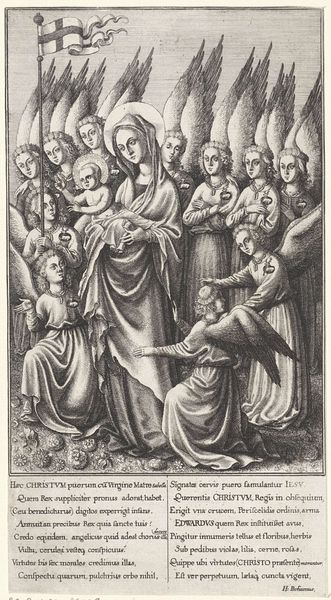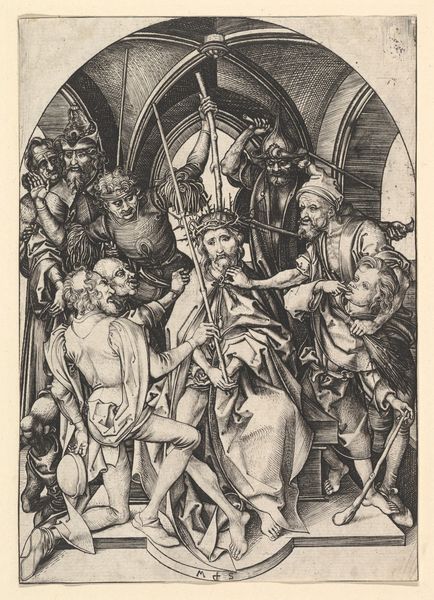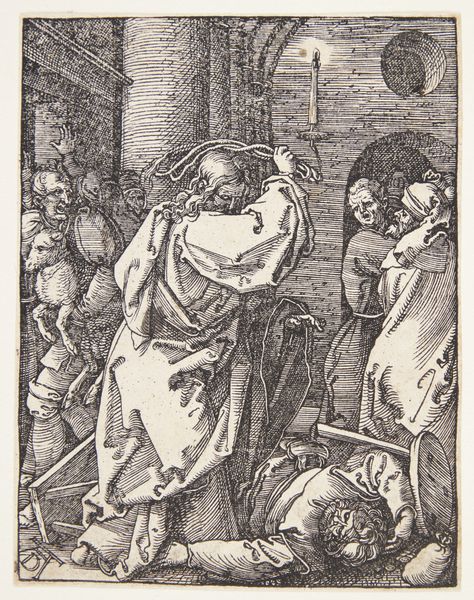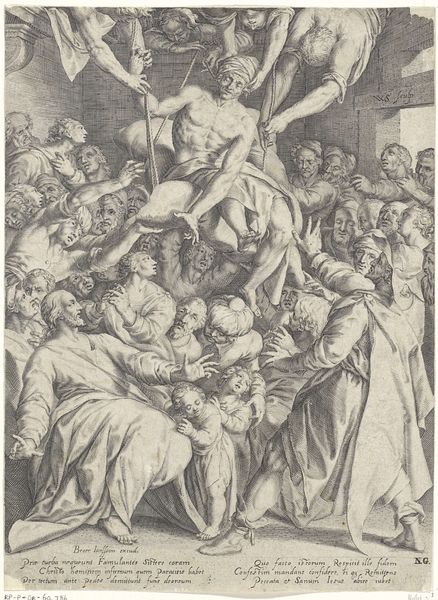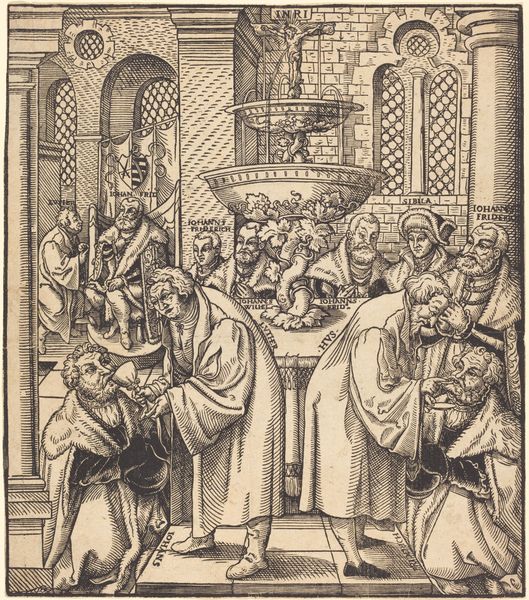
painting, oil-paint
#
narrative-art
#
painting
#
oil-paint
#
figuration
#
11_renaissance
#
oil painting
#
13_16th-century
#
history-painting
#
italian-renaissance
Dimensions: 166.3 x 150.1 cm
Copyright: Public Domain
Editor: So, here we have Hans Holbein the Elder's "Christ’s Arrest" from 1501. It's an oil painting located at the Städel Museum. The crowd surrounding Christ feels quite theatrical. It’s hard to tell if it’s celebratory or sinister. What’s your interpretation? Curator: I see this work as a carefully constructed visual statement deeply embedded in its historical moment. Holbein isn’t simply depicting a biblical scene. The crowded composition speaks to the social and political tensions of the late medieval/early Renaissance period. Think about how the artist strategically places figures, what does their clothing communicate to the audience of the time? Editor: The varied clothing definitely makes it seem like this is not your typical biblical art. What can you tell about society through the clothes? Curator: Absolutely! We need to think about patronage, this image serves public didactic purposes. Consider how different attire symbolizes status and function within the community of the time, also alluding to those historical events from which this depiction is being re-contextualized in art. And, more crucially, how this depiction functions politically in conveying power, wealth, and allegiance in that era? How might the image of the arrest of Christ been interpreted, manipulated, or used within religious reform movements of the era, to take power? Editor: So, it's like the painting becomes a stage where societal roles and historical references play out, beyond the surface level of just illustrating a Bible scene? Curator: Exactly. Holbein utilizes this scene as a framework to talk about contemporary issues related to social hierarchy. I would suggest to look at the light and shadow next time. The spotlight on one figure while darkening the background speaks to societal values. Editor: I will definitely check out the light play when I revisit. Thanks for opening my eyes to its historic background! Curator: My pleasure! I'm glad I could provide some perspective, looking beyond just the art is equally fulfilling.
Comments
Join the conversation
Join millions of artists and users on Artera today and experience the ultimate creative platform.
